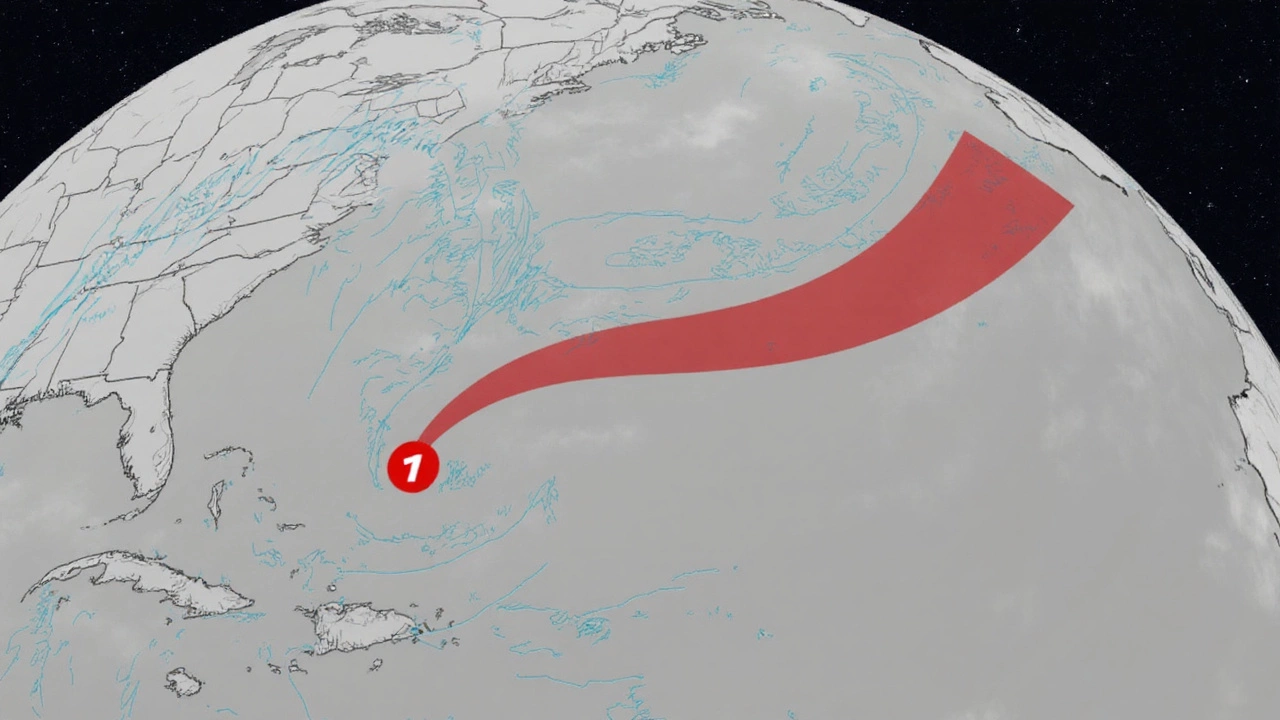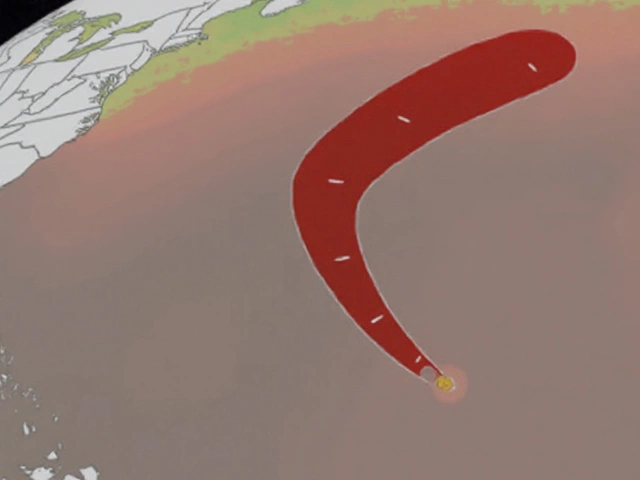By September 22, 2025, Hurricane Gabrielle had vaulted from a fuzzy tropical disturbance into a full‑blown Category 4 hurricane. The jump shocked seasoned meteorologists and put the Atlantic’s east coast on high alert, especially from the Outer Banks up to Delaware’s shoreline. While the storm’s eye was still being pinned down, the rapid pace of its strengthening underscored how quickly tropical systems can become dangerous.
What drove Gabrielle’s rapid intensification?
The origin story began with Tropical Wave 92L, a swath of low‑pressure air that peeled off the African coast in early September. By the 17th, the wave had organized enough to earn the designation Tropical Depression Seven, later upgraded to Tropical Storm Gabrielle. Early on, the storm’s structure was messy: thunderstorm clusters peppered both north and south of the embryonic center, and satellite imagery showed no classic spiral bands. This lack of organization made it tough for forecasters to lock onto a precise location.
What changed? Warm sea‑surface temperatures north of the Bahamas provided abundant energy, while wind shear—the sideways force that can tear storms apart—relaxed dramatically. Within a tight 48‑hour window, deep convection wrapped tightly around a nascent eye, allowing the storm to tap the ocean’s heat and spin up rapidly. The National Hurricane Center (NHC) logged a 45‑mph jump in sustained winds, pushing Gabrielle into the Category 4 bracket.
Rapid intensification isn’t new, but the speed at which Gabrielle upgraded challenged even the most advanced prediction tools. Researchers note that such bursts often occur when a storm traverses a “sweet spot” of high moisture, low shear, and very warm water—a trifecta Gabrielle hit head‑on.

Spaghetti models and the range of possible tracks
With the storm now a major hurricane, forecasters turned to ensemble models—popularly called spaghetti models—for guidance. Each model runs the same initial data through a slightly different algorithm, producing a bundle of possible paths that, when plotted, look like tangled noodles. The spread is especially wide when a storm’s core is still settling, as was the case with Gabrielle.
Key takeaways from the latest model runs include:
- All scenarios keep Gabrielle over warm Atlantic waters for at least the next 48 hours, giving it further fuel for potential strengthening.
- A majority (about 60%) push the storm toward the North Carolina coast, with landfall timelines ranging from 48 to 96 hours.
- Some outliers thread the system east of the Outer Banks, sparing the immediate shoreline but still threatening high surf and rip currents.
- Eastern models forecast a turn northwest toward Delaware, though this path carries the highest uncertainty.
Experts caution that not every spaghetti strand is created equal. Models such as the European ECMWF and the US GFS have historically performed better in mid‑Atlantic scenarios, while others can over‑forecast intensification. The NHC blends these outputs, applying “cone of uncertainty” graphics to convey the most likely corridor.
Coastal officials in North Carolina, Virginia, and Delaware have issued advisories urging residents to monitor official updates, secure property, and prepare evacuation routes. Even regions south of the projected landfall zone should stay vigilant for hurricane‑force winds, heavy rain, and storm surge that can travel far inland.
In practical terms, the storm could bring:
- Storm surge up to 8‑10 feet along exposed beaches.
- Rainfall totals exceeding 12 inches, raising flash‑flood risks.
- Winds capable of downing trees and power lines, potentially leaving millions without electricity.
- Coastal erosion that could damage infrastructure and beachfront properties.
Given the fluid nature of Gabrielle’s track, the best defense remains staying informed. The NHC updates its advisory every six hours, and local emergency managers are holding briefings to translate model data into actionable steps for residents.
The evolution of Gabrielle from a shapeless wave to a Category 4 hurricane illustrates the volatile character of Atlantic storms during peak season. As technology improves and model ensembles multiply, the challenge remains translating complex forecasts into clear messages for the public. For now, the headline is simple: watch the skies, keep emergency kits ready, and follow official guidance as the storm continues its Atlantic trek.

Write a comment